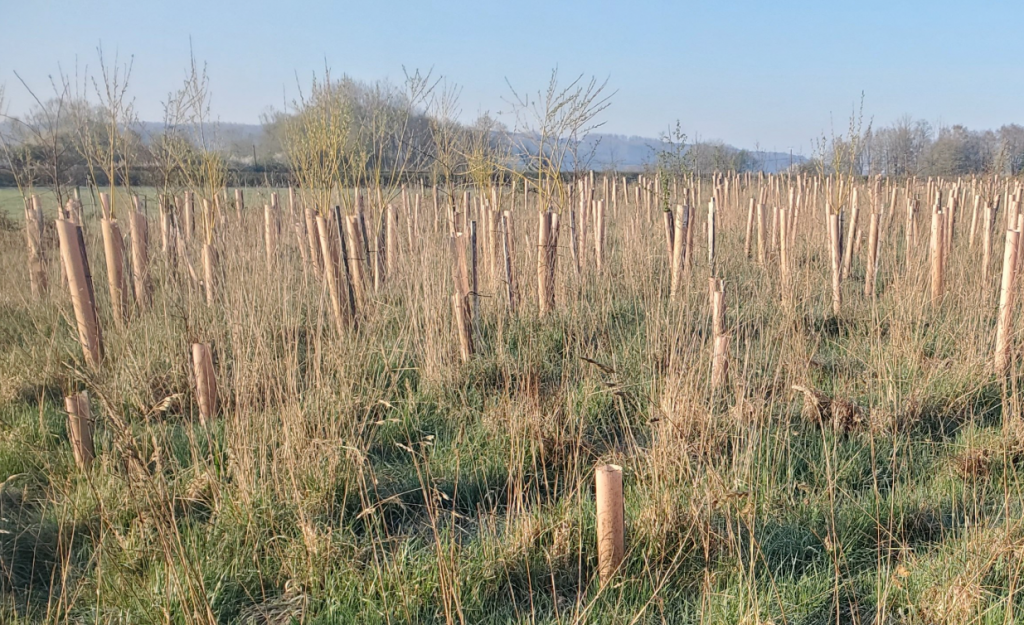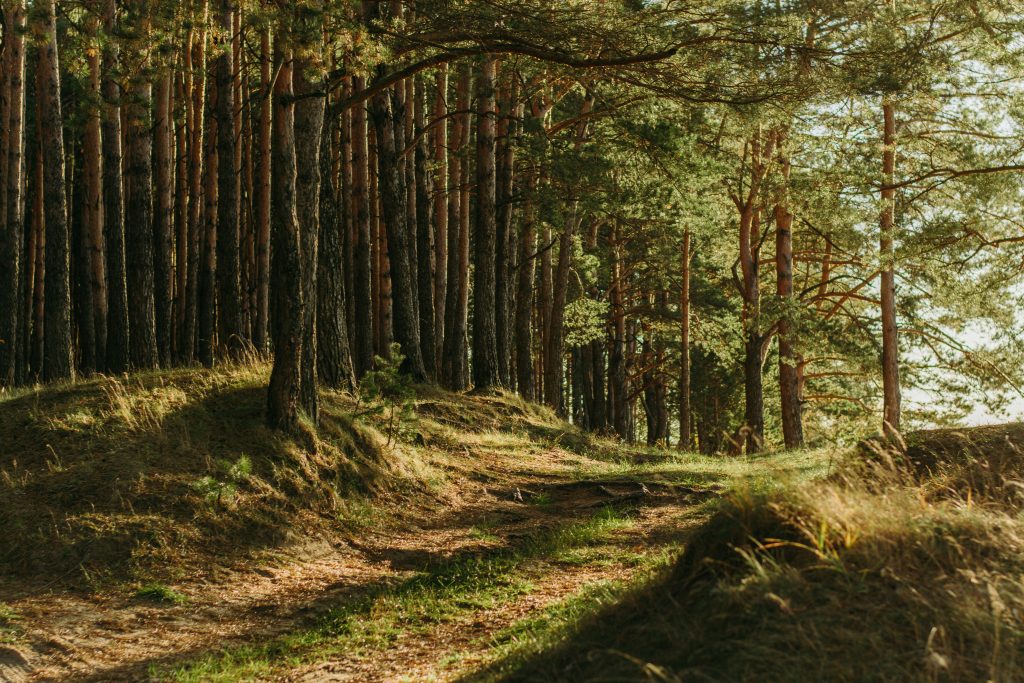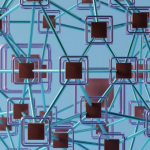Even at this point in the global journey to Net Zero I still get told by those companies I speak to that planting trees is central to achieving Net Zero. In fact, just last week I had a conversation with a company where the key strategy to addressing current and future emissions was to plant trees.
There are lots of good reasons to plant trees. Habitat restoration and increased biodiversity, along with the obvious social and environmental benefits are easy to identify. As part of your company’s CSR work trees are a perfect component.
But, as a significant part of your Net Zero journey? Not that good at all, even if you’re playing the ‘net’ not actual ‘zero’ game.
Why are we planting trees anyway?
Trees are a great natural way to capture carbon. The idea is that as trees grow and capture carbon this offsets the carbon emissions of the company. Taken to the extreme, you plant enough trees and the equivalent of all the company’s CO2 emissions get captured making the company Net Zero. But the logic and reality is completely off way before that goal is neared.
Erroneous Carbon Accounting
Trees capture carbon, they don’t capture all of the seven Greenhouse gases identified under the Kyoto Protocol and named in the GHG Protocol: carbon dioxide (CO2), methane (CH4), nitrous oxide (N2O), hydrofluorocarbons (HFCs), perfluorocarbons (PFCs), sulphur hexafluoride (SF6), and nitrogen trifluoride (NF3).
In accounting for carbon in Scope 3 emissions categories we use the CO2e measure. That’s the Carbon Dioxide ‘equivalent’ figure derived from looking at the other greenhouse gases and calculating the climate impact of those in terms of CO2. For example, one tonne of nitrous oxide (N2O) is equivalent to approximately 265 tonnes of equivalent carbon dioxide (CO2e) in terms of global warming potential over a 100-year period.
If you essentially don’t know what you’re doing or are intentionally cooking-the-books you’ll have this CO2e figure in your carbon account, offset it with trees and call it Net Zero. Yet the trees will sequester CO2 only, so the NO2 is still in the atmosphere acting as 265 tonnes of CO2 in terms of climate impact. Rinse and repeat across your whole workplace and supply chain and it may well be that you addressed all the CO2, but the environment will still be full of all the CH4, N20, HFCs, PFCs, SF6 and NF3 you emitted.

Misleading Quantification of Captured Carbon
Next, what about confirmation and quantification of the total CO2 those trees are really sequestering? This is surprisingly hard to do and often overlooked. When those trees get planted you just committed to a monitoring project running for the next 30 to 100 years, depending on the species of tree, location and environmental conditions.
Let’s quantify – how much does a typical tree store? By typical I mean the much maligned Sitka Spruce and the much beloved broadleaf such as English Oak. For a hectare of lightly-managed broadleaf woodland the CO2 captured in the first 30 years would be around 1.3t CO2 per year, for coniferous it would be around 4.9t CO2 per year. This is a great example of slow growing trees V fast growing trees, dense planting V light planting. Perhaps we can ease up on the Sitka hate, at least in terms of CO2. With regards to habitat restoration and biodiversity – I’m with you.
However, there’s an issue with this rosy picture – the trees that are planted have to survive, be well maintained and they eventually get cut down or die.
Tree Survivability is not Known
There’s no specific data about the number of newly planted trees that die in UK plantations. Various reports point out many tree die offs are in the first season and put the final figure at between 25% and 30% of the trees planted are dead within 8 years. It’s easy to spot areas of tree planting where this first-season die off would seem to be correct.
That massively impacts the expected sequestration and offsets that can be obtained through the use of trees, even where this is extended to capture in the soil. This also feeds back into the aspect of erroneous carbon accounting. Particularly where the company has banked the carbon capture in advance of the delivery, which is all too common and why the SBTi, even with its 2024 discussion and potential shift in position regarding offsets, isn’t fond of offsets except for mopping up residual emissions.

Sequestration impermanence needs to be factored in. For the trees that do survive all that carbon captured in the wood needs to remain captured. Letting wood rot into the ground simply releases the carbon again. The wood needs to be used in low carbon construction for example to ensure it is permanently captured.
Short term need, long term delivery
An English Oak takes 50-100 years to reach a circumference of around 220cm which indicates it’s captured roughly 10.5 tonnes of carbon. The Sitka Spruce are a little quicker. The question then is when are you looking to reach Net Zero? The trees won’t deliver the carbon capture needed to support your Net Zero goal, especially if a quarter of them are dead.
So what’s the answer?
Sustainable practices, reduction, reuse and decarbonising the workplace and supply chain. Along with some tree planting.
Hitting Net Zero relies on sustainable practices that reduce the carbon footprint of the workplace and supply chain permanently. As SBTi state these reductions need to be “measurable, permanent, and verifiable”. Infinite offsets are never the answer to the majority of emissions nor will they be accepted by verifying organisations, investors or clients. The emissions need to be addressed directly. The workplace is under your control and every aspect of every office, warehouse, data centre, factory floor and plant that you have needs to be brought into scope of your decarbonisation strategy.
Net Zero is a goal, it’s not the end of the journey.
Then it’s time to look across the supply chain and asses the environmental impact of all the materials, transportation, waste, non-CO2 emissions and energy used to get you all the things you need in your operations. That means working with the individual suppliers to help them understand your goals and their capability, then collaborate with them on innovative approaches to materials sourcing, waste reduction, reuse, recycling and circularity by design. Especially where they are your sole or key supplier and simply dropping them for another is not viable.
Yes, planting trees sounds a lot easier, and while valuable it’s not as meaningful. Hitting Net Zero or True Zero is work, it’s a multi-year programme to achieve the goal and then an ongoing commitment to maintain it.
Perhaps then you can start addressing historical emissions, before your baseline year? OK, maybe one step at a time!
Mark.
#sustainability #netzero #supplychain


